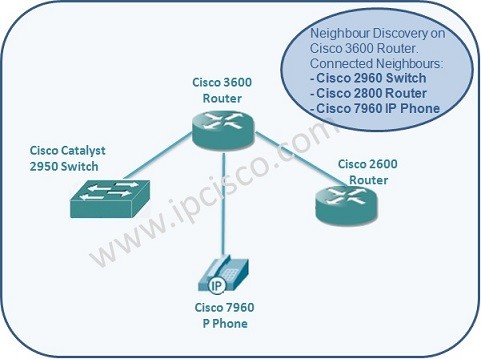- COURSES
- SPECIALS
- BLOG
- MEMBERS
- SHOP
- ABOUT
- ENROLL HERE

CDP (Cisco Discovery Protocol) is a Cisco specific Neighbour Discovery Protocol works on Layer 2. CDP (Cisco Discovery Protocol) is also licensed to run on some network devices of other vendors. There is also a standard Neighbor Discovery Protocol named LLDP that works on all wendors. Here, we will learn theorical part of Cisco Discovery Protocol. In the next lesson, we will learn How to Configure CDP on Cisco Devices.
By using CDP, Cisco devices discover their directly connected Cisco neighbours. But to do this, CDP must be enable on both devices. By default CDP is enabled on Cisco devices.

CDP provides many important information about the neighbour device. Device IDs, ip addreses, capacities etc. are provided to the requested neighbour by using CDP (Cisco Discovery Protocol).
There are two versions of CDP. These are, Version 1 and Version 2. The information that is collect is increased by the new version, version 2. And CDP version 2 is the default one.
If the device runs CDP version 1, then it ignores the CDP version 2 frames. But if the device runs CDP version 2, then it so not ignore any packet. It behaves like version 1 to version 1, like version 2 to version 2 devices.
CDP is the protocol that can run on the SNAP ( Subnet Access Protocol ) supported medias. Ethernet, Token Ring, Frame Relay, ATM, HDL and PPP support SNAP, so CDP can run on these medias.
First of all, to use CDP, CDP must be enabled on both end devices. Each CDP enabled device send periodic messages (advertisements) to the multicast adress ” 01:00:0C:CC:CC:CC ” and makes its information available to the nodes which are listenning to it. This periodic advertisements sent every 60 seconds ( Hello Time ).

Leave a Reply